Marc Abrahams's Blog, page 606
January 14, 2012
Goodby, naked therapist, farewell
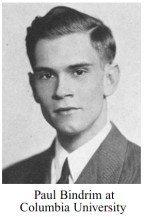 The Los Angeles Times on January 8, 1998, bid farewell to psychotherapy's most visible practitioner:
The Los Angeles Times on January 8, 1998, bid farewell to psychotherapy's most visible practitioner:
E. Paul Bindrim; Father of Nude Psychotherapy
E. Paul Bindrim, the controversial self-styled father of nude psychotherapy who won a landmark libel suit over a novel he claimed deprecated his techniques, has died. He was 77. Bindrim died Dec. 17 at Cedars-Sinai Medical Center in Los Angeles, his wife, Mary, said Tuesday. She plans to scatter his ashes at sea Jan. 17.
In 1967, Bindrim conducted his first nude workshop in Deer Park, Calif., and almost got thrown out of the American Psychological Assn.
But he persevered, and two years later Gwen Davis Mitchell, a novelist best known for "The Pretenders," asked to attend one of his swimming pool therapy sessions for research.
Bindrim's practice consisted of placing several people in the warm pool for long sessions of touching and massaging, talking and sometimes shouting or acting out rage….
BONUS: Margarita Tartakovsky's "The History of Nude Psychotherapy"

Improbable Research at ARISIA Today (Saturday)
Today, Saturday, January 14, ARISIA (the con for people who are going to ARISIA) in Boston will feature a special session on the Ig Nobel Prizes and Improbable Research.
WHERE & WHEN: ARISIA, Boston, Massachusetts, USA. Westin Waterfront Hotel, 425 Summer Street. Room: Lewis (3E). 2:30 pm.
WHAT: Highlights from Ig Nobel Prize winning studies and patents, presented in dramatic mini-readings by luminaries and experts (in some field). Between presentations, members of the audience will be challenged to divine the intended purpose of diagrams from certain research papers.
WITH: Marc Abrahams, Ig Nobel co-producer and stage manager David Kessler, human spotlight Jim Bredt, and others.
UPDATE: A photo from the event. James Bacon of London in 2014, a visitor to ARISIA, performs a reading, while human spotlight James Bredt provides illumination. David Kessler provided this photo:
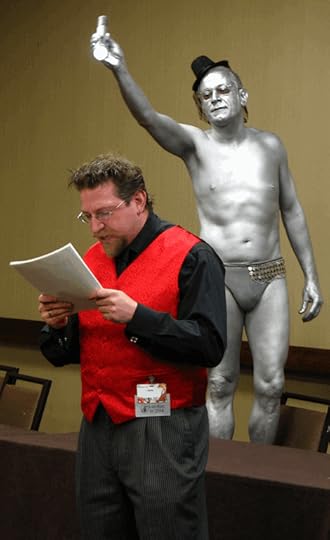
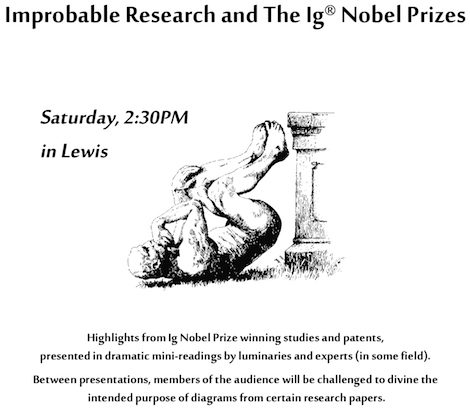

January 13, 2012
The venerable Powers of Ten video, but using food
Isaiah Saxon updates the venerable Powers of Ten video, using food [HT Vaughn Tan]:
BONUS: The venerable Powers of Ten video, which Charles and Ray Eames made long ago for IBM:
BONUS: The more obscure Powers of Nine video:

January issue of mini-AIR
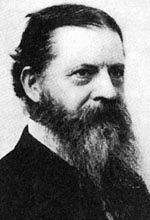 The January issue of mini-AIR just went out. Topics include:
The January issue of mini-AIR just went out. Topics include:
Front-Brain & Rear-Brain Learners [a new cogno-intellectual project]
Chewing Sounds
Salt-On-Salt Poet
Crispy,Crunchy, Crackly
and more
Mel [pictured here] says, "It's swell."
(mini-AIR is the simplest way to keep informed about Improbable and Ig Nobel news and events. Just specify your email address, and mini-AIR will be emailed to you every month)

Apostrophe Protection Ig Nobellian Admonishes Bookseller
 Ig Nobel Prize winner John Richards swung into action against a bookstore chain this week. (Mr. Richards, founder of The Apostrophe Protection Society, was awarded the 2001 Ig Nobel Prize in literature for his efforts to protect, promote, and defend the differences between plural and possessive.) Harry Wallop reports in The Daily Telegraph:
Ig Nobel Prize winner John Richards swung into action against a bookstore chain this week. (Mr. Richards, founder of The Apostrophe Protection Society, was awarded the 2001 Ig Nobel Prize in literature for his efforts to protect, promote, and defend the differences between plural and possessive.) Harry Wallop reports in The Daily Telegraph:
Waterstones drops its apostrophe
Waterstones, the bookshop, has dropped the apostrophe in its trading name and logo, sparking outrage among some of its customers.
The country's last remaining national chain of bookshops, founded by Tim Waterstone, has decided it is more "practical" to ditch the apostrophe.
James Daunt, the managing director, who took over the chain last year following a change of ownership said: "Waterstones without an apostrophe is, in a digital world of URLs and email addresses, a more versatile and practical spelling."
One customer on Twitter responded: "Wish I'd used that in spelling tests …". Others used the hashtag #isnothingsacred, while another tweeted that it was another step towards apostrophe extinction.
John Richards, the chairman of the Apostrophe Protection Society said: "It's just plain wrong. It's grammatically incorrect. If Sainsbury's and McDonald's can get it right, then why can't Waterstones. You would really hope that a bookshop is the last place to be so slapdash with English."
The change is also a slight to the founder Tim Waterstone, who set up the company more than 30 years ago, though long ago stopped having any involvement….

Arianna Huffington Pulls Sword From Ig Nobel Winner Dan Meyer's Throat
The Huffington Post headline says it all: "Arianna Huffington Pulls Sword From Dan Meyer's Mouth".
Dan shared the 2007 Ig Nobel Prize in medicine, with Dr. Brian Witcombe, for their British Medical Journal report called "Sword Swallowing and Its Side Effects". Today in New York City, Dan had an intimately touching encounter with media mogul Arianna Huffington. The image here is from one of several videos, on the Huffington Post site, that show how things folded and unfolded:
BONUS: Video of Dan Meyer and Brian Witcombe's acceptance speech at the 2007 Ig Nobel Prize ceremony:

Play, Usurpation and Boredom (at work)
 If you, reader, work for a living, would you say that "… work and play are largely indistinguishable in the postindustrial organization"? Some may say yes, some may say no, and yet others may remain undecided. Thus the 'Should work be play?' / 'Should play be work?' questions remain very much open for study – for academics such as assistant professor Bent Meier Sørensen of Copenhagen Business School, who has recently co-authored the paper Play at work: continuation, intervention and usurpation for the scholarly journal Organization (January 2012, vol. 19 no. 1 81-97)
If you, reader, work for a living, would you say that "… work and play are largely indistinguishable in the postindustrial organization"? Some may say yes, some may say no, and yet others may remain undecided. Thus the 'Should work be play?' / 'Should play be work?' questions remain very much open for study – for academics such as assistant professor Bent Meier Sørensen of Copenhagen Business School, who has recently co-authored the paper Play at work: continuation, intervention and usurpation for the scholarly journal Organization (January 2012, vol. 19 no. 1 81-97)
"We identify three ways in which workplaces engage in play: play as a (serious) continuation of work, play as a (critical) intervention into work and play as an (uninvited) usurpation of work."
The professor also played a role in the editorial paper Work, play and boredom for the equally scholarly journal ephemera, 11, 4: pp. 329-335.
Where the authors note that:
"Play, it seems, is a very serious business indeed."
And add:
"The more the workplace resembles an adventure playground and the less it looks like a dull and dreary office, so the theory goes, the more value is added to the bottom line."
But caution:
"Play may turn back against the organization and disrupt its smooth functioning; the managers who open a game in the organization may find that they lose control over it and come to realize that play is occasionally able to usurp work rather than stimulate it."
And remind us:
- how Iggy Pop succinctly framed things back in 1979 "I'm bored, I'm bored, I'm the chairman of the bored".

January 12, 2012
The Traveling Pigeon Problem
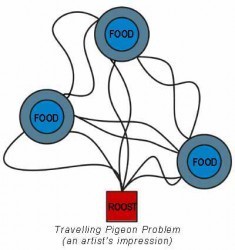 In the award-winning children's book 'Don't let the pigeon drive the bus' by Mo Willems, (Hyperion Books for Children, 2003) a persistent pigeon 'asks, pleads, cajoles, wheedles, connives, negotiates, demands and uses emotional blackmail in attempts to get behind the wheel'. The bus driver is decidedly reluctant to let the pigeon drive. But why?
In the award-winning children's book 'Don't let the pigeon drive the bus' by Mo Willems, (Hyperion Books for Children, 2003) a persistent pigeon 'asks, pleads, cajoles, wheedles, connives, negotiates, demands and uses emotional blackmail in attempts to get behind the wheel'. The bus driver is decidedly reluctant to let the pigeon drive. But why?
"On the one hand, the bus driver might have been concerned that the pigeon would not be able to safely drive the bus. On the other hand, maybe the driver was more concerned that the pigeon would not be able to take a route that would efficiently pick up all the passengers at the various stops throughout the city."
– explain researchers Brett Gibson, Matthew Wilkinson and Debbie Kelly at the department of psychology, University of New Hampshire, US. The team are commenting on the scenario because they have experimentally determined that, along with humans, pigeons are able to make reasonably accurate predictions about solutions to simple examples of the notoriously tricky Travelling Salesperson Problem (TSP)
"We presented pigeons in a One-way and Round-Trip group with TSPs that included two or three destinations (feeders) in a laboratory environment. The pigeons departed a start location, traveled to each feeder once before returning to a final destination. Pigeons weighed the proximity of the next location heavily, but appeared to plan ahead multiple steps when the travel costs for inefficient behavior appeared to increase. The results provide clear and strong evidence that animals other than primates are capable of planning sophisticated travel routes."
The resulting paper:'Let the pigeon drive the bus: pigeons can plan future routes in a room' is currently in press at the journal Animal Cognition.
Further reading:
For human performance on the travelling salesperson problem see: 'Human performance on the traveling salesman problem', MacGregor, J. N.; Ormerod, T. (1996), Perception & Psychophysics 58 (4):

Specifically-picky eaters and their inventions
Shirley S. Wang, writing in the Wall Street Journal, reports on people who are specifically picky about what they want to eat — and about how inventive some of those people become:
Everyone has their favorite parts of favorite foods—think the "Seinfeld" episode about muffin tops or people who eat only the middle of an Oreo. Increasingly, food fanatics are finding each other online and going to great lengths to get their favorite parts.
There are Facebook pages that focus on favorite parts of food, like "Oreo company needs to bottle the middles and sell it" and "I love sticking my finger in the cake and eating the frosting." More than 1,000 people like the page, "I love saving the marshmallow in my lucky charms cereal to eat at the end."
Some are even turning their passion into products that make it easier for others to get that best bite….
When it comes to brownies, the battle line often is drawn between lovers of the corner pieces and those who want the middles. Tara Millspaugh, a 39-year-old who works in biotech, refuses to eat the gooey center pieces and had all but given up baking brownies until she discovered a pan that fashioned every square to come with a dense, chewy edge: the Edge Brownie Pan [pictured here]. Now she makes them regularly and gives the pans as gifts….
(Thanks to investigator Vaughn Tan for bringing this to our attention.)
BONUS: The patent (US #6412402) for the edge-pan.

January 11, 2012
Troxel's Cow pieology – The study of cow pie
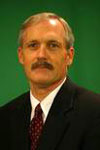 "Cow pieology 101 – The study of cow pies" is the work of Professor Tom R. Troxel [pictured here]. Professor Troxel is Associate Department Head of the Department of Animal Science at the Dale Bumpers College of Agricultural Food and Life Sciences at the University of Arkansas.
"Cow pieology 101 – The study of cow pies" is the work of Professor Tom R. Troxel [pictured here]. Professor Troxel is Associate Department Head of the Department of Animal Science at the Dale Bumpers College of Agricultural Food and Life Sciences at the University of Arkansas.
The Drovers Cattle Network published "Cow pieology 101". Here is the beginning:
Cow pieology is the study of cow pies, but it's certainly not a science. It's an art that beef cattle producers have practiced for many years. Many beef producers observe cow pies to determine when to start supplemental feeding or when to rotate the cattle to a different pasture. The shape, size, color and texture can tell a story about the cow's diet quality.
By observing the cow pie, one can get an indication of the quality of the animal's diet. This is not a science but rather an art that can be used as an indicator. Figure 1 is a cow pie from a pregnant cow eating hay that tested 14.8 percent protein, 28.2 percent fiber and 57.3 percent TDN or energy. This hay met the cow's requirements for protein (7.8 percent) and TDN (53.2 percent). This cow pie was flat, round and dark in color. The fiber content in the hay was low (28.2 percent); therefore, the hay was easily digested.
The cow pie in Figure 2 shows a remarkably different shape. It was not flat and round but rather the cow pie is hard, stacked and showed grooves or waves. When this cow pie landed on the ground, it stacked one on top of the other. This cow was eating hay that tested 5.1 percent protein, 31.5 percent fiber and 53.7 percent TDN. A cow pie with this shape usually is a sign of high fiber and low digestibility….
[via Metafilter]
BONUS: "Effects of Water on the Decomposition and Release of Nutrients from Cow Pats," C.H. Dickinson and G. Craig, New Phytologist, Vol. 115, No. 1 (May, 1990), pp. 139-147. The authors are at the University of Newcastle Upon Tyne.

Marc Abrahams's Blog
- Marc Abrahams's profile
- 14 followers

























